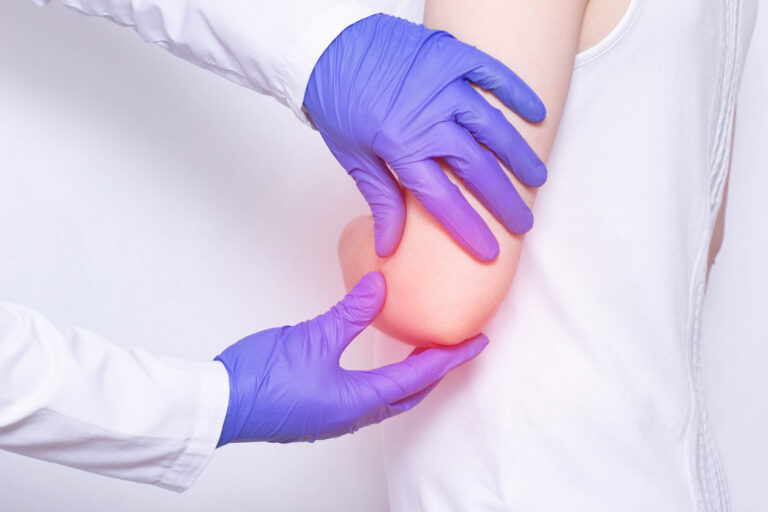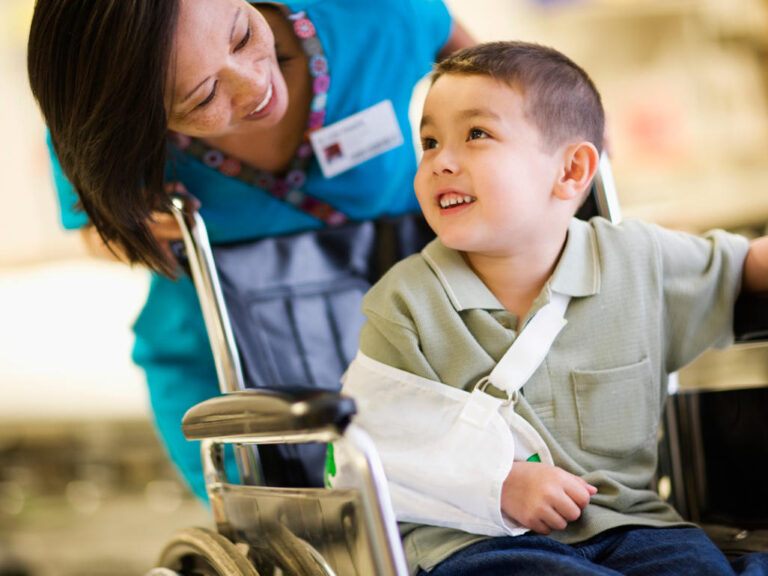NURSEMAID’S ELBOW
Numerous kids squeal with amusement while you swing them around or to and fro by the arms. In any case, did you have any idea that this fun activity can lead to the most widely recognized injuries in small children?
One of these injuries is dislocated elbow or nursemaid’s elbow and it can be quite painful for your little one. It occurs when a child’s elbow is pulled and one of the bones to some extent dislocates, giving it another name, “pulled elbow.” Your specialist might allude to it as a spiral head subluxation.
This injury was named when nursemaids (or nannies) regularly focused on children and had the stand of causing this injury by pulling on a child’s outstretched arm.

WHAT LEADS TO NURSEMAID’S ELBOW?
Nursemaid’s elbow can result due to common activities such as tugging or pulling on your child’s lower arm or hand, especially if the arm is twisted. Usually, a small amount of force can lead; to injury. Some of the most common causes of nursemaid’s elbow is a pulling-type injury, including
Catch a child by the hand to stop a fall: By reaching an arm out for protection can overextend the elbow, causing the ligament to slip.
- Lift a child by the hands or wrists: This can cause a nursemaid’s elbow in infants and very young children.
- Pull a child’s arm through a jacket sleeve: This can put stress on your child’s elbows. Never get a little child or baby by the hands or wrists, however, lift under the armpits.
- Swing a child by the arms or hands: This can put stress on the elbow joint and should be avoided.
- Yank on a child’s arm to make them walk faster: This can make the ligament slip. You should always be gentle when taking a child by the hand.
Rarely, nursemaid’s elbow may happen if:
- An infant rolls over onto the arm
- A child uses their hands to brace themselves during a fall
“Nursemaid’s elbow” is a specific sort of elbow dislocation that most normally occurs in little youngsters who have had a sudden yanking of their lower arm. The result is a dislocation of the top of the radius bone at the elbow. It is normal in children less than 5 years old.
Specialists additionally group elbow separations as per the degree of the harm and where it happens. The 3 sorts incorporate:
- Simple: No major injury to the bone
- Complex: Severe injuries to the bone and ligament
- Severe: Damage to the nerves and blood vessels around the elbow
HOW CAN YOU IDENTIFY NURSEMAID’S ELBOW?
The fundamental symptom of a pulled elbow is tormenting when the child moves the arm. Nursemaids’ elbow can be very difficult, truth be told. There is, however, no swelling, bruising, or other sign of a serious physical issue.
Your child may:
- Complain that the elbow hurts
- Cry when the arm is moved or touched
- Hold the arm close to their side or support it with the other arm
- Not use the arm
- Numbness
- Tingling
- Swelling
- Stiffness
- Bruising

You should not try to straighten your child’s arm or move the elbow back into place. If you do, the child will resist, and this could cause more serious damage. These include:
- Visible deformity of the joint
- Elbow instability (a feeling that the elbow is slipping out of joint)
- Elbow pain, especially at the joint
- Inability to move or bend the elbow
Severe pain, even without swelling, can be a sign of a broken bone. Call your doctor if your child injures their elbow. The more extended the elbow has been awkward, the more excruciating and troublesome it is to establish back, and the more it takes to completely recuperate.
DIAGNOSING DISLOCATED ELBOW
To analyze an elbow disengagement, a muscular expert will look at your elbow, talk about any past wounds and take a total clinical history. Much of the time, further imaging tests are expected to test for others going with cracks or harm to tendons and ligaments. These imaging tests include:
- CT scan
- MRI
- Musculoskeletal ultrasound
- X-ray
Our musculoskeletal radiologists are specialists in deciphering progressed imaging innovation and cautiously auditing examines. This takes into account an exact conclusion that prompts ideal treatment plans. Treatment choices might incorporate a blend of painless treatments and, if fundamental, medical procedures.
HOW TO TREAT DISLOCATED ELBOW?
Generally dislocated elbows return to their usual situation all alone. More extreme cases need a specialist to return the issues that remain to be worked out to a legitimate position.
Treatment for a disjoined elbow fluctuates as indicated by the seriousness of the injury. Steps you can take to diminish torment while you hold on to see a specialist include:
- Rest
- Apply ice
- Keep the elbow elevated
The treatments for an elbow dislocation include:
- Manipulation: A specialist returns the bones to their normal positions, called joint reduction.
- Medication: Your specialist may recommend over-the-counter medications such as NSAIDs to reduce pain.
- Rest: When the joint is once again in the right spot, you might have to keep it fixed and safeguard it. Utilizing a sling can assist the elbow with jointing mend.
- Physical therapy: You might have to do activities to fortify the muscles and ligaments in the elbow to assist with supporting many of its mends.

- Surgery: The specialist may recommend surgery if:
-
- Your specialist is unable to return the bones to their proper positions through manipulation.
- Dislocation damaged nerves or blood vessels in the elbow.
- Torn tendons or muscles need repair.
-
CAN DISLOCATED ELBOW BE PREVENTED?
With caution, you can reduce your child’s risk of a dislocated elbow. Be cautious on dangerous surfaces and steps to keep away from falls. Stay away from overtraining in sports to keep away from abuse wounds. A few youngsters are more probable than others to get a pulled elbow. It can happen at least a time or two, and it might happen a few times in kids who have especially free joints.
To forestall a pulled elbow, ensure you don’t get your youngster by the lower arms or wrists – lift them utilizing their armpits all things being equal. Show other people who care for your youngster, for example, grandparents and kid care laborers, the right method for getting your kid. It is surprising for kids more than five years of age to get a pulled elbow, as their joints are significantly more grounded.
OUTLOOK
Dislocated Elbow recuperates well and has a decent forecast. In the wake of observing intently for three to five days, the bone specialist will have a patient start delicate development activities of the elbow if there is no crack. Exercise-based recuperation can be expected for ideal recovery. As a rule, recuperation happens with next to no enduring impacts. Complexities of nerve or corridor injury can prompt long haul harm to the capacity of the hand and lower arm.
If you or anyone you know is suffering from dislocated elbow, our expert providers at Specialty Care Clinics will take care of your health and help you recover.
Call us on (469) 545-9983 to book an appointment with our specialists.
